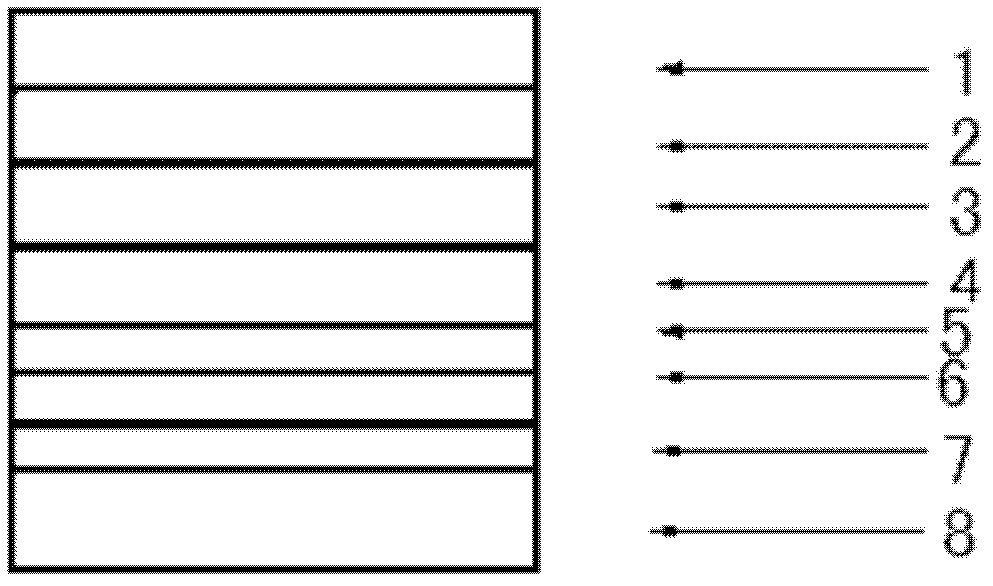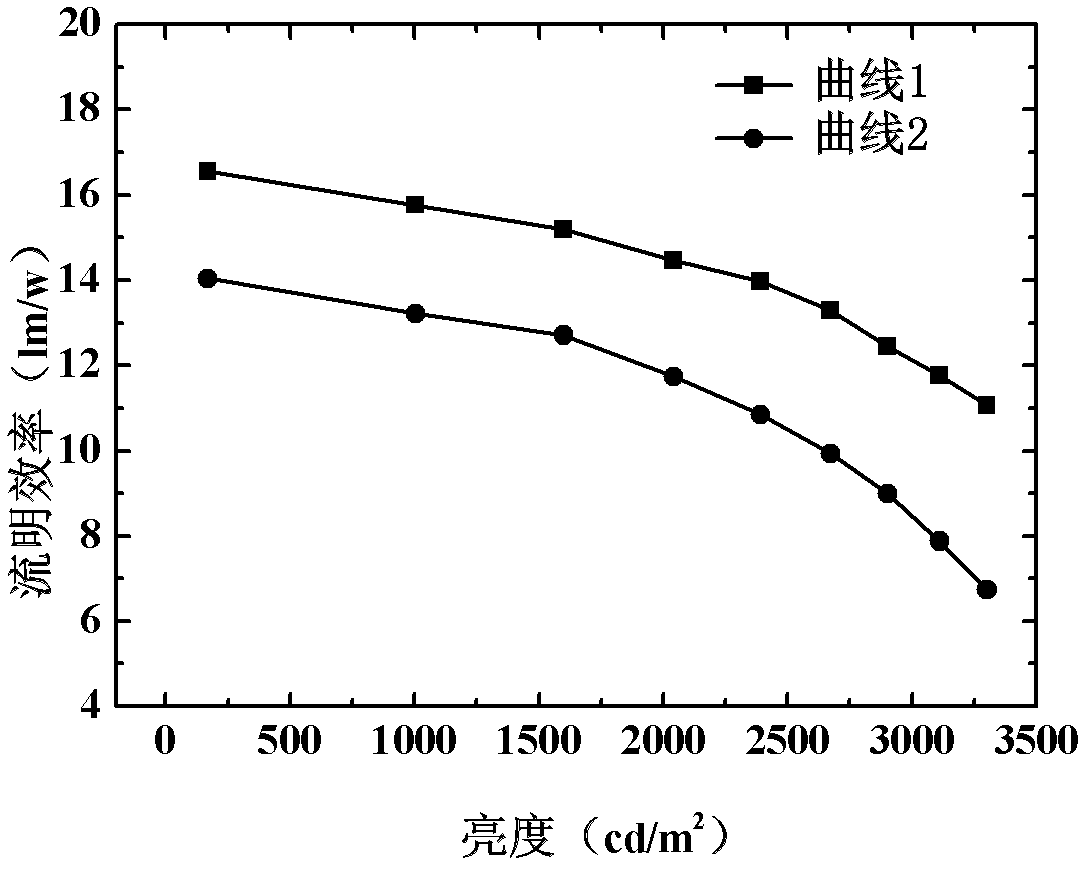Top-emitting organic electroluminescence device and manufacturing method thereof
A luminescence and top emission technology, which is applied in the fields of electrical solid-state devices, semiconductor/solid-state device manufacturing, electrical components, etc., can solve the problems of difficulty in obtaining lumen efficiency and low light output rate, and achieve the goal of improving lumen efficiency and increasing output rate Effect
- Summary
- Abstract
- Description
- Claims
- Application Information
AI Technical Summary
Problems solved by technology
Method used
Image
Examples
Embodiment 1
[0042] Example 1: A top-emitting organic electroluminescent device was prepared according to the following steps.
[0043] Sonicate the glass substrate sequentially with detergent, deionized water, acetone, ethanol, and isopropanol for 15 minutes each to remove organic pollutants on the glass surface. Next, the anode is vacuum-evaporated sequentially, the material is Ag, and the thickness is 120nm; the hole injection layer, the material is MoO 3 , the thickness is 30nm; the hole transport layer, the material is TAPC, the thickness is 30nm; the light emitting layer, the material is Alq 3 , thickness is 20nm; electron transport layer, material is TPBI, thickness is 50nm; electron injection layer, material is CsN 3 , with a thickness of 3 nm; and a cathode, made of Ag, with a thickness of 20 nm.
[0044] Next, using isopropanol as a solvent, 35% by weight of P25 titanium dioxide particles and 20% by weight of Triton X-100 emulsifier were added, stirred for 24 hours, and a titan...
Embodiment 2
[0047] Example 2: A top-emitting organic electroluminescent device was prepared according to the following steps.
[0048] Sonicate the glass substrate sequentially with detergent, deionized water, acetone, ethanol, and isopropanol for 15 minutes each to remove organic pollutants on the glass surface. Next, the anode is vacuum-evaporated sequentially, the material is Al, and the thickness is 250nm; the hole injection layer, the material is WO 3 , with a thickness of 20nm; the hole transport layer, made of NPB, with a thickness of 60nm; the light-emitting layer, made of DCJTB, with a thickness of 50nm; the electron transport layer, made of TAZ, with a thickness of 40nm; the electron injection layer, made of LiF, with a thickness of is 0.7nm; and the cathode is made of Ag and has a thickness of 30nm.
[0049] Next, using isopropanol as a solvent, 25% by weight of P25 titanium dioxide particles and 15% by weight of Triton X-100 emulsifier were added, stirred for 24 hours, and a ...
Embodiment 3
[0052] Example 3: A top-emitting organic electroluminescent device was prepared according to the following steps.
[0053] Sonicate the glass substrate sequentially with detergent, deionized water, acetone, ethanol, and isopropanol for 15 minutes each to remove organic pollutants on the glass surface. Next, the anode is vacuum-evaporated sequentially, the material is Au, and the thickness is 80nm; the hole injection layer, the material is V 2 o 5 , the thickness is 25nm; the hole transport layer, the material is TCTA, the thickness is 20nm; the light emitting layer, the material is TCTA: Firpic, the doping ratio is 20%, the thickness is 25nm; the electron transport layer, the material is TAZ, the thickness is 50nm; The electron injection layer is made of LiF with a thickness of 0.5nm; and the cathode is made of Ag with a thickness of 50nm.
[0054] Next, using isopropanol as a solvent, 40% by weight of P25 titanium dioxide particles and 15% by weight of Triton X-100 emulsifi...
PUM
 Login to View More
Login to View More Abstract
Description
Claims
Application Information
 Login to View More
Login to View More - R&D
- Intellectual Property
- Life Sciences
- Materials
- Tech Scout
- Unparalleled Data Quality
- Higher Quality Content
- 60% Fewer Hallucinations
Browse by: Latest US Patents, China's latest patents, Technical Efficacy Thesaurus, Application Domain, Technology Topic, Popular Technical Reports.
© 2025 PatSnap. All rights reserved.Legal|Privacy policy|Modern Slavery Act Transparency Statement|Sitemap|About US| Contact US: help@patsnap.com


